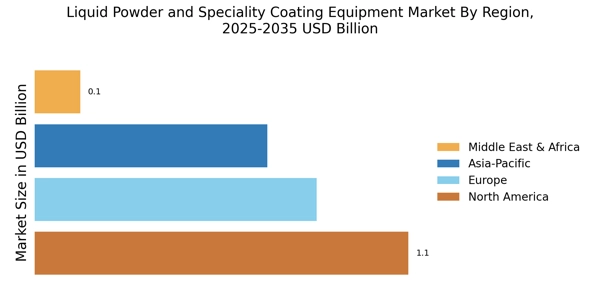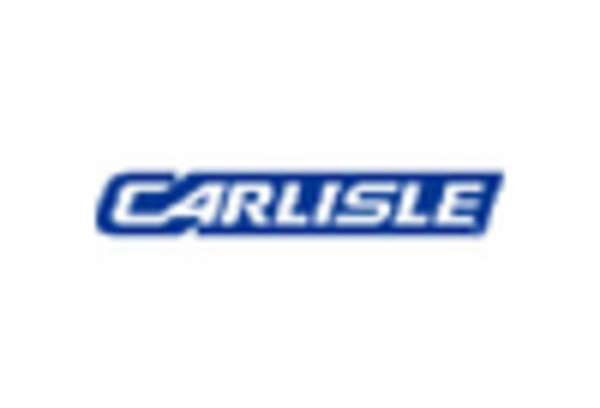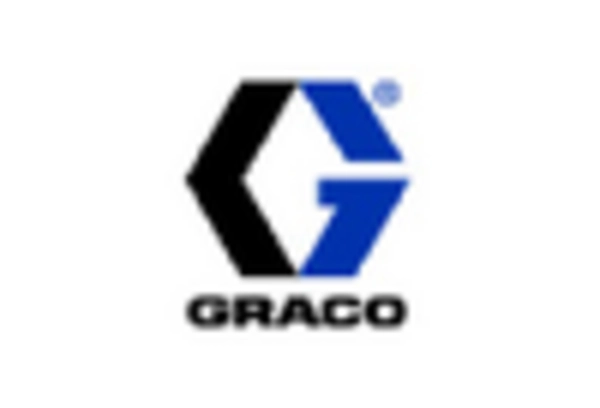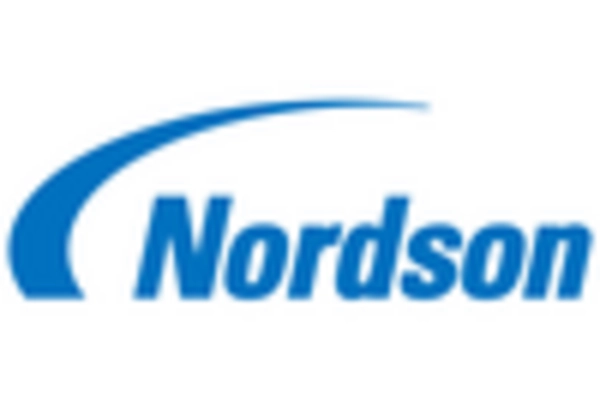Growth in End-User Industries
The Liquid Powder and Speciality Coating Equipment Market is benefiting from the growth of end-user industries such as automotive, construction, and electronics. As these sectors expand, the demand for high-performance coatings that provide durability and aesthetic appeal is increasing. For instance, the automotive industry is projected to grow at a CAGR of 4.5% through 2026, leading to a heightened need for advanced coating solutions. This growth is prompting manufacturers to invest in state-of-the-art coating equipment that meets the evolving demands of these industries. Consequently, the Liquid Powder and Speciality Coating Equipment Market is poised for substantial growth as it aligns with the needs of these expanding sectors.
Rising Demand for Customization
Customization is becoming a pivotal driver in the Liquid Powder and Speciality Coating Equipment Market. As industries seek tailored solutions to meet specific application requirements, manufacturers are responding by developing versatile equipment that can accommodate a wide range of coating materials and techniques. This trend is particularly evident in sectors such as electronics and consumer goods, where unique finishes and coatings are essential for product differentiation. The market for specialty coatings is expected to reach USD 30 billion by 2026, indicating a robust demand for customized solutions. Consequently, the Liquid Powder and Speciality Coating Equipment Market is adapting to these needs, fostering innovation and enhancing customer satisfaction through bespoke equipment offerings.
Increased Focus on Operational Efficiency
Operational efficiency is a critical driver in the Liquid Powder and Speciality Coating Equipment Market. Companies are increasingly seeking equipment that not only enhances productivity but also reduces downtime and maintenance costs. The integration of smart technologies, such as IoT and predictive maintenance, is becoming commonplace, allowing manufacturers to monitor equipment performance in real-time. This focus on efficiency is expected to propel the market forward, with estimates suggesting a potential market size of USD 25 billion by 2027. As businesses strive to optimize their operations, the Liquid Powder and Speciality Coating Equipment Market is likely to evolve, offering solutions that cater to these efficiency-driven demands.
Sustainability and Environmental Regulations
The increasing emphasis on sustainability and stringent environmental regulations are significantly influencing the Liquid Powder and Speciality Coating Equipment Market. Manufacturers are compelled to adopt eco-friendly coating solutions that minimize environmental impact, such as water-based and powder coatings. These alternatives not only comply with regulations but also appeal to environmentally conscious consumers. The market for eco-friendly coatings is projected to grow at a CAGR of 6.5% over the next five years, reflecting a shift towards sustainable practices. As a result, the Liquid Powder and Speciality Coating Equipment Market is likely to see a rise in demand for equipment that supports these sustainable coating technologies, driving innovation and compliance.
Technological Innovations in Coating Equipment
The Liquid Powder and Speciality Coating Equipment Market is experiencing a surge in technological innovations that enhance efficiency and performance. Advanced coating technologies, such as electrostatic spray systems and high-efficiency particulate air (HEPA) filters, are being integrated into equipment to improve application precision and reduce waste. These innovations not only optimize the coating process but also contribute to lower operational costs. The market is projected to grow at a compound annual growth rate (CAGR) of approximately 5.2% over the next five years, driven by the demand for high-quality finishes in various sectors, including automotive and aerospace. As manufacturers adopt these advanced technologies, the Liquid Powder and Speciality Coating Equipment Market is likely to witness increased competitiveness and improved product offerings.


















Leave a Comment